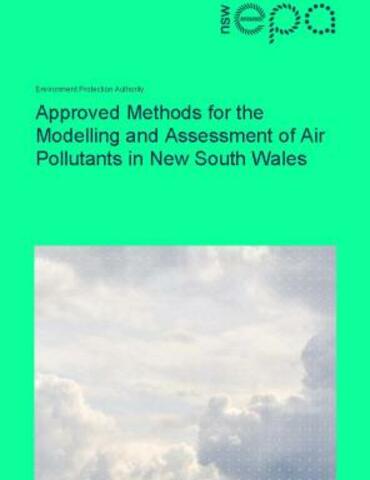Approved methods for the modelling and assessment of air pollutants
The Approved Methods for the Modelling and Assessment of Air Pollutants in NSW (2022) lists the statutory methods to be used for modelling and assessing emissions of air pollutants in NSW.
The Approved Methods for the Modelling and Assessment of Air Pollutants in NSW (2022) (PDF 688KB) (Approved Methods for Modelling (2022) replaces the 2016 version.
- We will reference the Approved Methods for Modelling 2022 (PDF 4688KB) when evaluating air quality impact assessments submitted as part of any planning application on or after 9 September 2022.
- We will reference the Approved Methods for Modelling 2016 (PDF 1MB) when assessing air quality impact assessments submitted as part of any planning application before 9 September 2022.
It is referred to in the Protection of the Environment Operations (Clean Air) Regulation 2021 – Part 5: Air impurities emitted from activities and plant. The document may also be referred to in conditions attached to statutory instruments, such as licences or notices issued under the Protection of the Environment Operations Act 1997.
The document contains information on
- how to prepare emissions inventory data and meteorological data
- methods for accounting for and dealing with background concentrations
- dispersion modelling methodology and interpretation
- impact assessment criteria for common pollutants
- procedures for developing site-specific emission limits, including those for hydrogen sulfide
- worked examples
Find out more about air quality impact assessments
Find out more measuring air emissions
Other guidance
The CALPUFF modelling system can be used for regulatory applications in NSW where the AUSPLUME dispersion model is not approved or suitable for use. It includes the CALMET and CALPUFF models.
The system offers a
- diagnostic meteorology model to resolve fine scale terrain effects
- a non-steady state approach to pollutant dispersion appropriate for complex terrain such as coastlines and valleys
The CALPUFF Modelling System guidance document (PDF 980KB) prepared by TRC Environmental provides
To ensure assessment practices in NSW are consistent with best practice and contemporary science, the EPA commissioned reports which catalogue assessment methodologies in other jurisdictions. The EPA uses these reports to ensure assessment practices adopted in NSW are consistent with best practice approaches and contemporary scientific understanding. This ensures assessment is as accurate as possible.
When assessing the air quality impacts from emissions of oxides of nitrogen (NOx) and volatile organic compounds (VOCs) from their premises, industry needs to consider the potential generation of ground-level ozone. EPA commissioned Environ to develop a tiered approach for assessing ozone impacts. The tiered approach has an initial screening to determine whether detailed analysis is needed. The approach includes
- initial screening using an Excel based tool (level 1)
- a refined procedure (level 2)
Download
Download

Approved Methods for the- Modelling and Assessment of Air Pollutants in NSW Approved Methods for the- Modelling and Assessment of Air Pollutants in NSW
